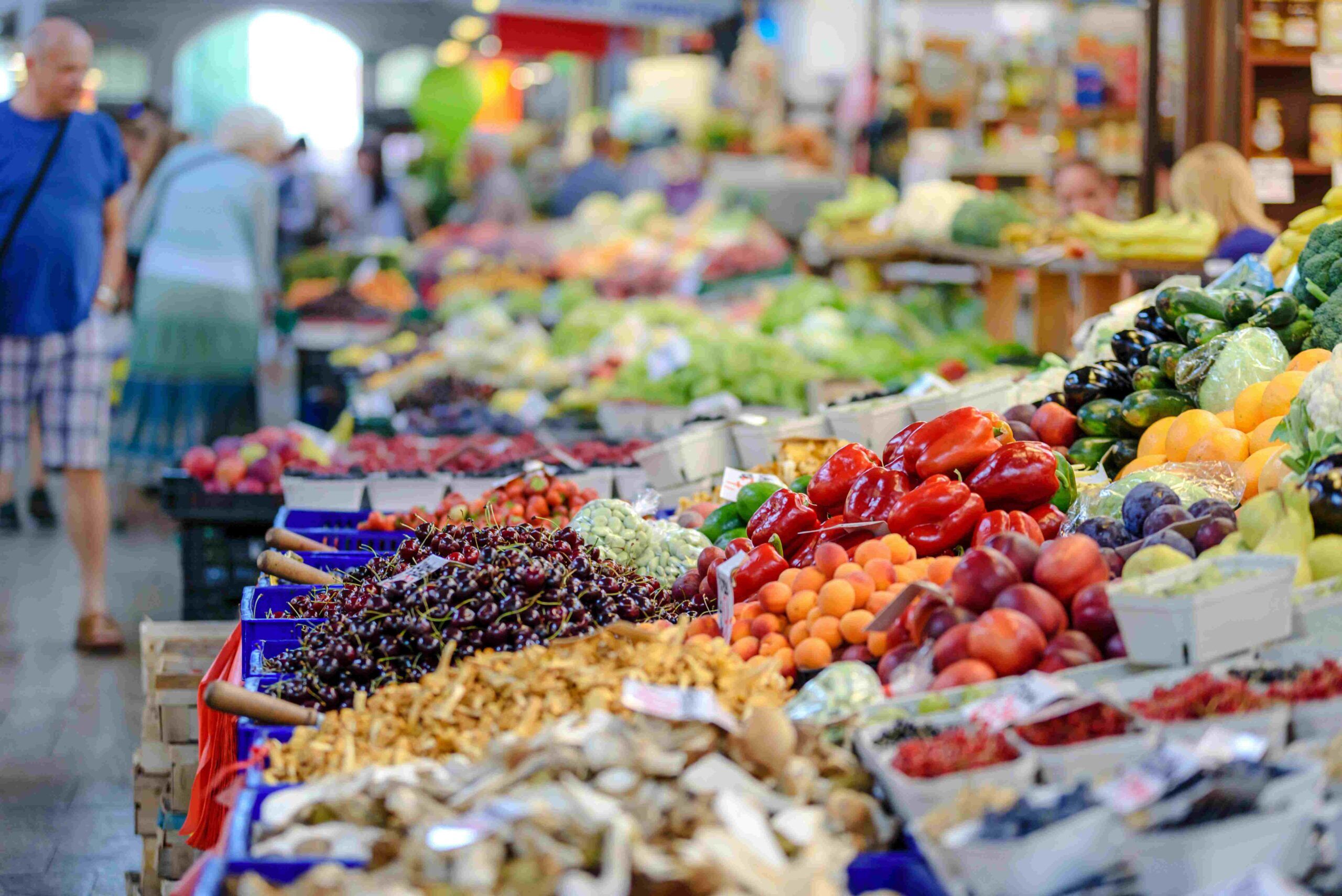
Going to the Market: A Colorful Experience
Article Level: A2
Explanation: This article highlights the vibrant, sensory experience of visiting a market. From colorful produce and fresh aromas to lively sounds and interactions with passionate vendors, markets offer a unique way to connect with food, local products, and the community.
Read more: Going to the Market: A Colorful Experience
Commonly Used Words from the Article
-
Vibrant /ˈvaɪbrənt/ (adjective): Full of energy and life, usually in colour.
The vibrant colours of the flowers brightened up the room.
-
Stall /stɔːl/ (noun): A small shop or table where goods are sold, especially in a market.
I bought fresh fruit from a stall in the market.
-
Aroma /əˈrəʊmə/ (noun): A pleasant smell, especially from food or drink.
The aroma of fresh coffee filled the kitchen.
-
Vendor /ˈvɛndə/ (noun): A person who sells goods or services, especially in a market.
The vendor was very helpful in choosing the right cheese.
- Artisan /ˈɑːtɪzən/ (noun): A person who makes things by hand, usually in a traditional or skilled way.
The artisan sold beautiful handmade pottery at the market.
Audio File of the Article

Going to the Market: A Colorful Experience
Going to the market is an exciting experience that brings together the senses of sight, smell, and taste. Whether it’s a local market or a large bustling one, every visit is filled with vibrant colours, fresh produce, and a variety of sounds. In this article, we will explore why markets are such a delightful place to visit and what makes them so special.
One of the first things you notice when entering a market is the colours. Stalls are often packed with bright fruits and vegetables, creating a beautiful rainbow of colours. Red apples, yellow bananas, green lettuce, and purple grapes – these colours immediately make the market feel lively and welcoming. The freshness of the produce is another reason why markets are so popular. Unlike supermarkets, which often sell produce that has been stored for a long time, market stalls offer fresh goods picked just the day before. This makes everything from tomatoes to carrots taste better.
The smells at the market are just as exciting as the colours. The scent of freshly baked bread from the bakery stall, the strong aroma of herbs and spices from the spice vendor, and the sweetness of ripe fruit fill the air. Some people visit the market just for the wonderful smells, even if they don’t need to buy anything!
Markets are also filled with sounds. You can hear the chatter of people talking, the friendly greetings between sellers and customers, and the gentle sound of money being exchanged. In some markets, there may even be live music, adding to the lively atmosphere. Every sound contributes to the feeling of community and warmth that you find in the market.
Another great part of the market experience is meeting the sellers. Unlike supermarket staff, market vendors are usually small business owners who are passionate about their products. They often know a lot about what they sell and can offer tips on how to cook or store their goods. Talking to the vendors is a great way to learn more about the food you eat and to discover new items you might not find in a supermarket.
Finally, markets are a great place to find local products. Many markets sell goods made by local artisans, such as handmade soap, candles, or jewellery. You can also find locally sourced honey, cheese, and even flowers. Buying from the market helps support local businesses and the community.
In conclusion, going to the market is not just about buying food. It’s about enjoying the colours, smells, sounds, and the people who make the market such a lively and colourful place. Whether you’re looking for fresh produce, local products, or just an exciting place to visit, the market is always a great choice.

Grammar Notes
Present Simple Tense: This tense is used to describe actions that are regular or habitual. For example: “Markets are also filled with sounds.” We use the present simple tense to talk about things that happen regularly or things that are generally true.
Adjectives: Adjectives are used to describe nouns. For example: “bright fruits and vegetables” or “fresh goods.”Adjectives help to give more information about the nouns they describe.
There is / There are: These phrases are used to talk about the existence of something. For example: “There are many stalls in the market.” We use “there is” for singular things and “there are” for plural things.

Five Questions Based on the Article
-
-
What are some of the colours you see at the market?
-
Why do people visit markets for fresh produce?
-
What smells can you find at the market?
-
How are the market vendors different from supermarket staff?
-
Why is it important to support local businesses at the market?
-

We’d love to hear your thoughts! Join the conversation by leaving a comment below. Sharing your insights, questions, or experiences can help you connect with others in our English learning community. It’s a great way to practice your English skills, engage with like-minded individuals, and improve together. Don’t be shy—jump in and let’s keep the discussion going!

 EnglishMasteryHub
EnglishMasteryHub